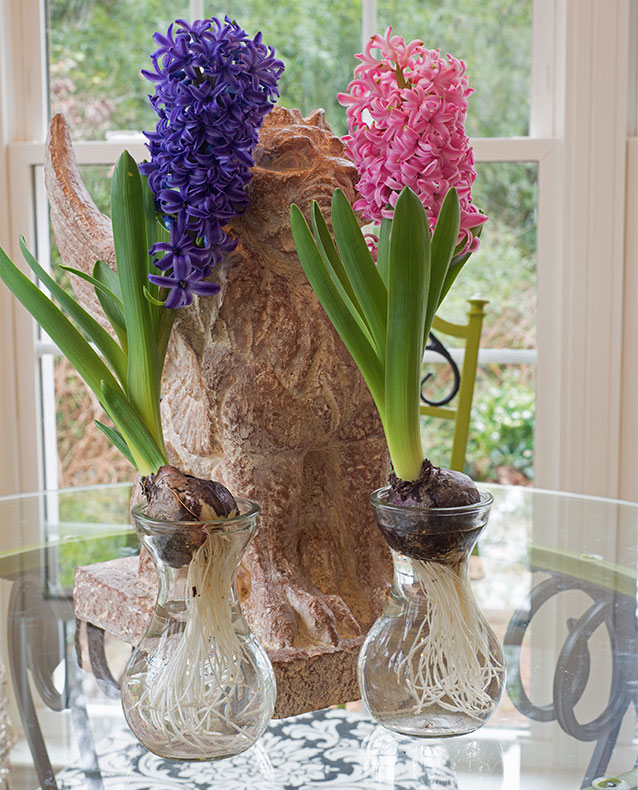Plant Hyacinths Now for a Fragrant Spring
Plus Garden To-Do’s for November
By L.A. Jackson
November is a grand time to plant spring-flowering bulbs, and gardeners are on the move to find not only the prettiest blooms for their landscapes, but, if possible, scented ones, too. Beauty from any of the typical three — daffodils, crocuses and tulips — is a given, although fragrant selections from them can be elusive. They exist, but you darn near have to sniff your nose inside out to detect their weak scents.
Not so with hyacinths (Hyacinthus orientalis). On crisp, early spring days, I usually smell my hyacinths before I see them. They are just that fragrant.
Hyacinths aren’t lacking in the good-looks department either. Held up on short, sturdy stems, crowded clusters of flared flowers salute the new spring in a dizzying assortment of colors that rival the range found on a rainbow.
As a bonus, hyacinths are more like daffodils and crocuses rather than one-season wonders like tulips, meaning they will come back spring after spring. However, I have found their flower shows can diminish over the years. Replanting more bulbs when their bloom production starts to wain is an obvious solution, and hyacinths — inexpensive, by the way — are worth the effort.
Hyacinth bulbs are best planted about 5 inches deep and 4 to 6 inches apart in a well-draining, well-tilled bed that basks in the springtime sun. (Too much shade will lead to floppy flowers.)
And too much nitrogen too fast (the typical bang plants get from standard fertilizers such as 8-8-8 or 10-10-10) will also cause the droops by stretching and weakening the stems, so it is best to use a time-release bulb fertilizer at planting time. Specialized bulb fertilizer, which is an easy find at most garden shops, costs more than regular fertilizer, but does provide a better, stretch-out nutrient nudge for primo hyacinth displays.
To intensify the eye-candy effect, plant hyacinths of the same color in swaths across perennial beds. This will certainly make these pretties hard to miss and definitely pooch up the fragrance factor. Also, because the nose will know they are around, consider growing hyacinths in containers close to areas you frequent, such as doorways, decks, porches or windows.
Finally, while gardeners are attracted to hyacinths, don’t expect the same adoration from those banes of bulb growers: deer and rabbits. Ditto for dirt-digging squirrels, who hate the bulbs. This makes hyacinths ideal springtime beauties for those who have to deal with such four-legged garden beasts!
Garden To-Do’s for November
Hyacinths showing up in stores during the holiday season will have been pre-chilled, so they will bloom earlier indoors than their typical flowering kin outdoors. Whether planted in potting soil or even glasses of water, these fragrant pretties will certainly bring cheer in the winter gloom! But even after their flower shows have finished, there is plenty of blooming spunk left in these bulbs. Just leave the hyacinths in a sunny spot indoors through the winter and then plant them in the spring garden. Since their flowering rhythm has been thrown off, keep in mind they probably won’t rebloom for two to three years.
- Two tips for new African violet growers:
(1) Wipe the pot rims at least once a month to prevent salt buildup from fertilizer, which can burn the leaves and cause them to curl; and (2) at the same time, give each container a quarter turn to prevent plants from becoming lopsided as they reach for the sun. - Did your hollyhocks look raggedy this year? Chances are good they were inflicted with a disease called rust. To help prevent this blight next summer, cut off the old stems — where rust likes to overwinter — and toss them in the trash. Do not compost.
-
More gardening tips
-
Share this story:






